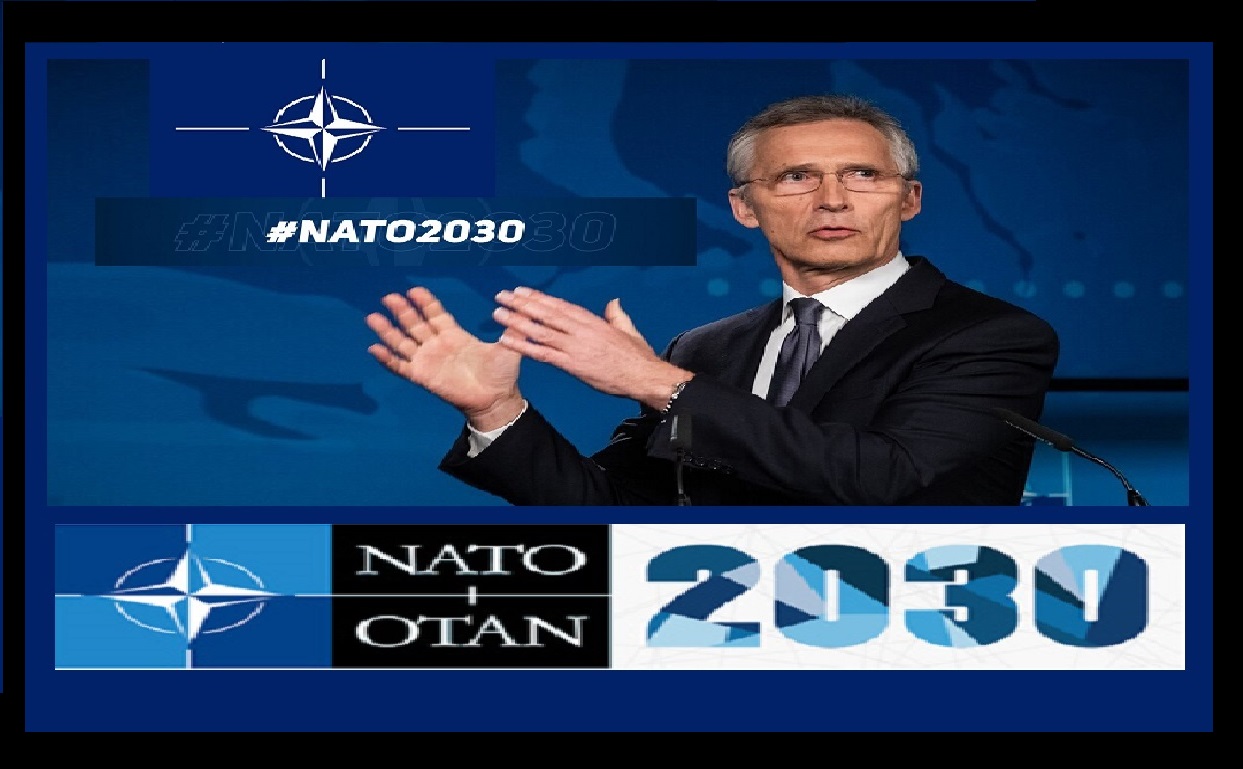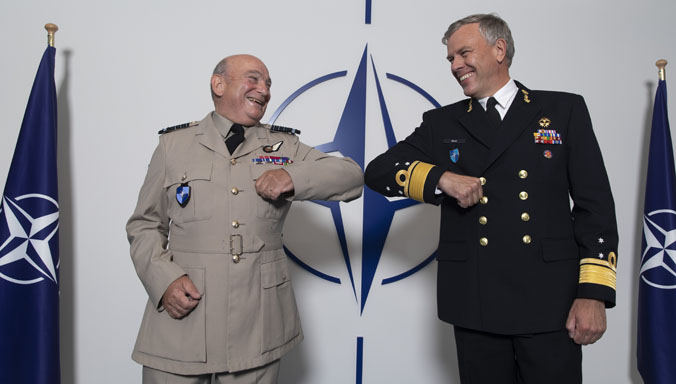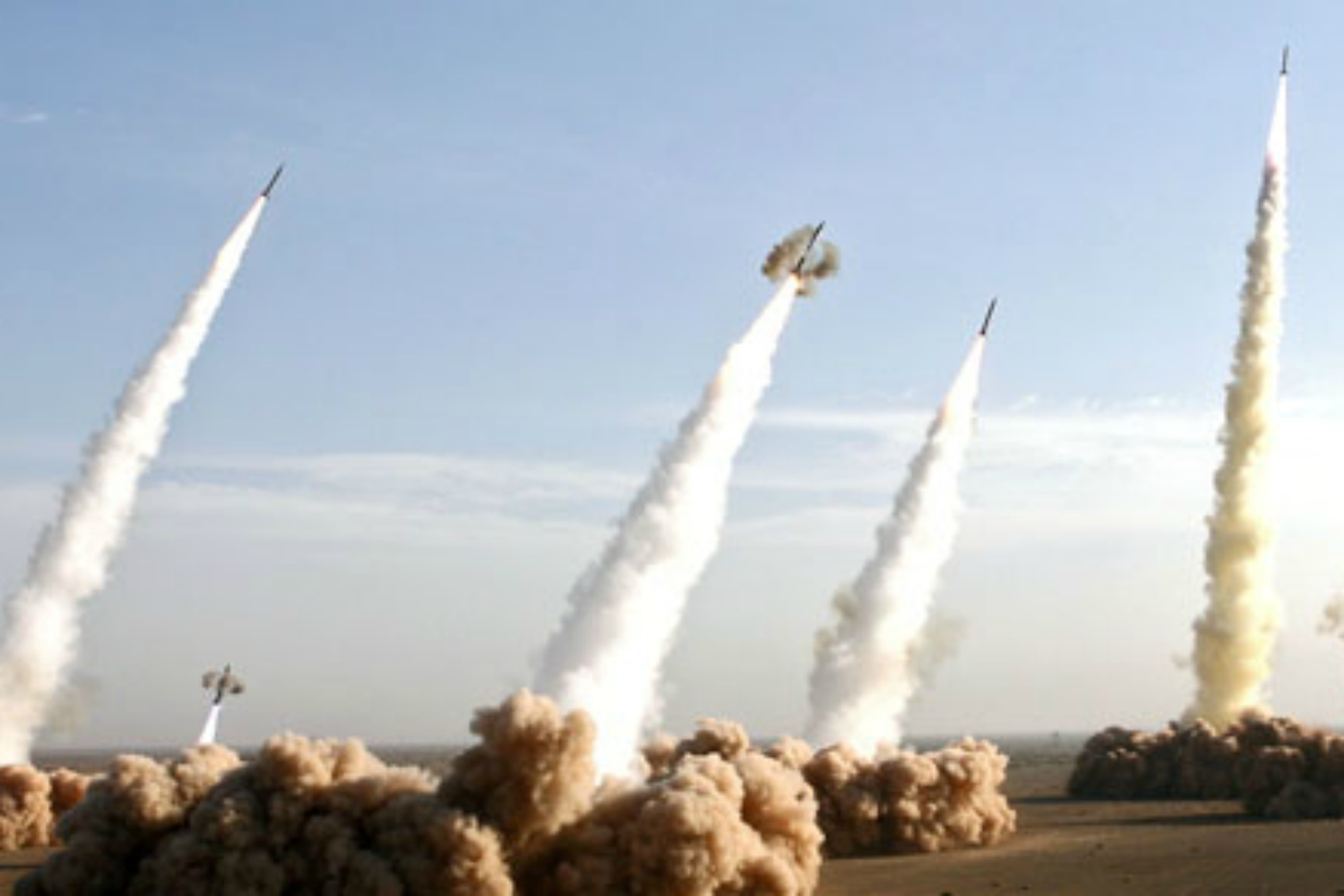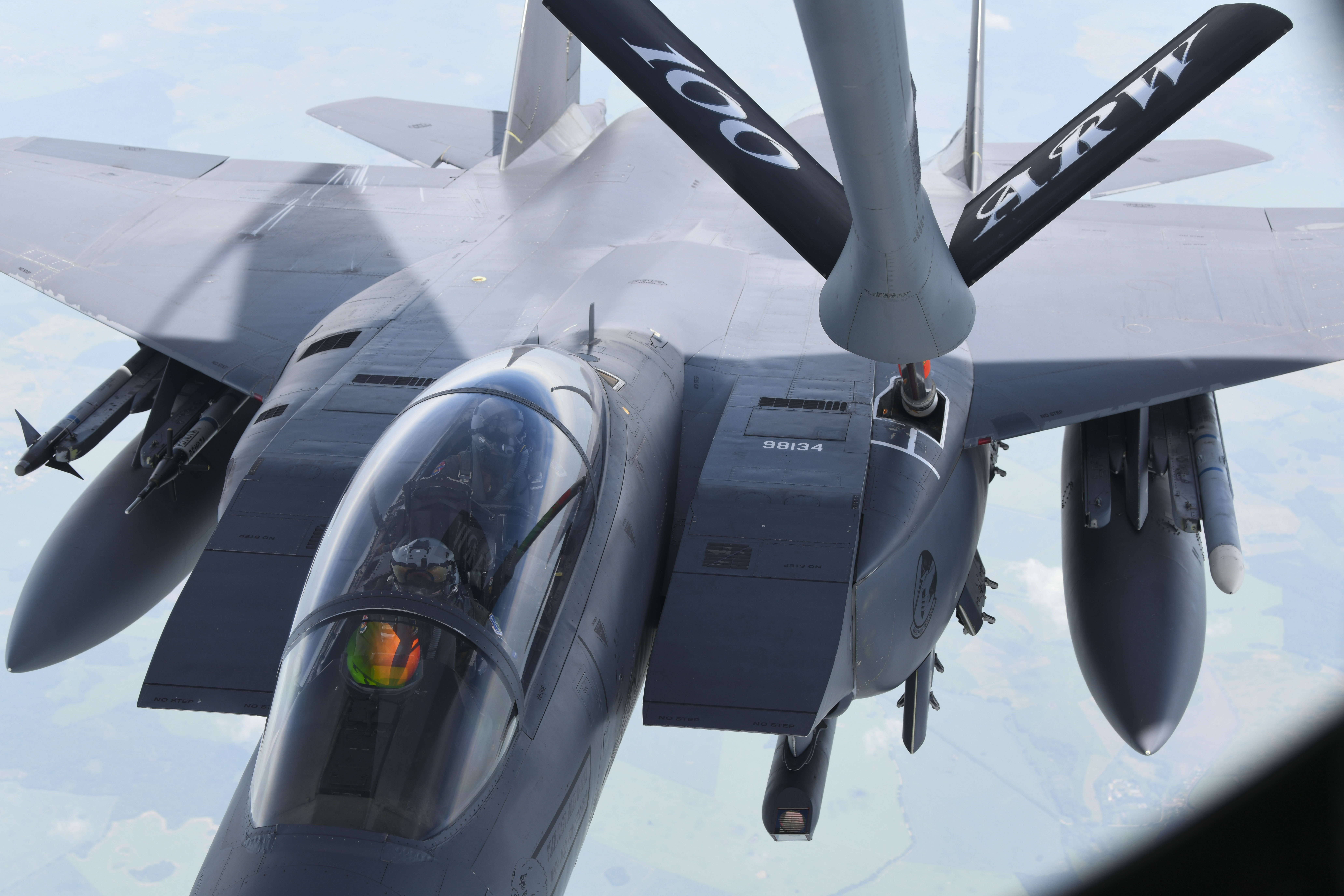
What Is NATO 2030?
The North Atlantic Treaty Organization
(June 2021) — NATO 2030 is an ambitious agenda to make sure NATO remains ready, strong and united for a new era of increased global competition.
NATO Leaders asked Secretary General Jens Stoltenberg at their meeting in London in December 2019 to lead a forward- looking reflection to make NATO stronger and fit for the future.
Over the last year, the Secretary General consulted widely with Allies and received valuable input from an independent group of experts. He also engaged with civil society, young people, parliamentarians and the private sector to help shape the NATO 2030 agenda.
On this basis, the Secretary General developed concrete proposals to make NATO stronger and ready for the future. Over the last months, Allies have been discussing these proposals and, at the Summit on 14 June 2021, NATO Leaders endorsed the NATO 2030 agenda.
The Summit comes at a pivotal moment for the Alliance, as NATO adapts to growing global competition and more unpredictable threats, including terrorism, cyber-attacks, disruptive technologies, climate change, and Russia and China’s challenges to the rules-based international order. Standing strong together to face a more unpredictable and competitive world is what the NATO 2030 initiative is about.

Proposal 1: Deeper Political Consultation and Coordination
Allied Leaders agreed to deepen and broaden political consultations in NATO. They pledged to consult more often on all issues that affect Allies’ security. They committed to continuing to consult on issues like arms control, climate change and security and emerging and disruptive technologies; and to take steps to re-establish consultations on economic matters related to security, such as export controls and technology transfers.
Allies also agreed to hold an additional meeting of Foreign Ministers every year, as well as more consultations with Allied capitals in different formats, including with National Security Advisors, Political Directors and other senior officials.
Allies will also invest in more consultations to better use non-military tools to address common security challenges and to seek coherent positions ahead of meetings in other international fora such as the UN General Assembly and the G-20.
Why Does It Matter?
NATO is the only platform that brings Europe and North America together every day.
Broadening the agenda for consultations, increasing the frequency of high-level meetings, and engaging more with Allied capitals will strengthen NATO’s role as the unique and indispensable platform for transatlantic consultations on security and defence, and ensure that Europe and North America can successfully continue to tackle a broad range of security challenges together.
Proposal 2: Strengthened Deterrence and Defence
At the Summit, Allied Leaders agreed to bolster Allied deterrence and defence. They reaffirmed their commitment to maintain an appropriate mix of nuclear, conventional and missile defence capabilities. They reiterated the importance of the 2014 Defence Investment Pledge and of continuing to aim to meet the NATO-agreed guideline of spending 2% of Gross Domestic Product on defence and 20% of annual defence spending on major new equipment by 2024.
They committed to the full and speedy implementation of military plans to strengthen the Alliance’s deterrence and defence posture and continue to improve the readiness of forces to meet current and future defence needs.
Why Does It Matter?
Since 2014, NATO has implemented the biggest reinforcement of Allied collective defence in a generation. Allies have committed more forces and new deployments on Allied territory and have invested in boosting the Alliance’s readiness, responsiveness and ability to reinforce.
At the 2021 Brussels Summit, Allies took further steps to strengthen the Alliance’s military posture, continue to increase defence spending, and modernise capabilities to defend and protect all Allies against any threat at any time.

Proposal 3: Improved Resilience
Allies will take a broader and more coordinated approach to resilience. They agreed to develop resilience objectives to guide nationally-tailored resilience goals and implementation plans, based on clearer and more measurable Alliance-wide resilience objectives.
This will allow NATO to better advice and assess national resilience efforts in support of NATO’s collective defence and to better link resilience with the Alliance’s broader posture and plans. Allies agreed to designate a senior official to coordinate efforts on the national level, and enhance and streamline consultations within NATO.
Why Does It Matter?
Resilience is our first line of defence and it is essential for NATO to successfully fulfil its three core tasks of collective defence, crisis management, and cooperative security.
Our militaries require resilient civilian infrastructure and services to operate effectively in peace, crisis or conflict. Resilience is also key to pushing back on potential adversaries who use a broad range of military, political and economic tools to try to weaken our societies and undermine Allied security.
NATO already plays an important role in bolstering resilience, including by setting minimum standards of resilience for Allies. Allies have agreed seven baseline requirements against which they can measure their level of preparedness.
Last year, NATO Defence Ministers discussed a comprehensive report on the state of critical infrastructure, including ports and airports, fuel supplies, food and medical equipment, as well as telecommunication networks, like 5G. The NATO 2030 decisions build on these existing efforts by concretely increasing the Alliance’s role and tools to ensure a minimum level of shared resilience among Allies

Proposal 4: Preserve our Technological Edge
Allies agreed to launch a new civil-military Defence Innovation Accelerator for the North Atlantic (DIANA). This Accelerator will boost transatlantic cooperation on critical technologies, promote interoperability and harness civilian innovation by engaging with academia and the private sector, including start-ups.
DIANA will include offices and test centres across the Alliance, and it will manage a database of trusted sources of investment. Allies also agreed to establish a multinationally funded NATO Innovation Fund, to which Allies can contribute on an opt-in basis, to invest in start-ups working on dual-use and emerging and disruptive technologies in areas that are critical to Allied security.
Why Does It Matter?
Emerging technologies are changing the nature of peace, crisis, and conflict. NATO Allies can no longer take their technological edge for granted. China, for example, intends to become the world’s leading power in artificial intelligence in the next decade. As the indispensable forum for transatlantic cooperation on the security-aspects of emerging and disruptive technologies, NATO is determined to stay ahead of the curve.
In recent years, NATO has stepped up its work on emerging and disruptive technologies, including by adopting an implementation strategy to ensure NATO’s edge in seven key disruptive technologies (artificial intelligence, data and computing, autonomy, quantum-enabled technologies, biotechnology, hypersonic technology, and space). DIANA will enable the Alliance to adapt and adopt new technologies more quickly, strengthen our industrial base, and bridge innovation gaps, ensuring Allies can continue to work effectively together.

Proposal 5: Uphold the Rules-Based International Order
Allies agreed to strengthen NATO’s relationships with like-minded partners and international organisations and forge new engagements including in Africa, Asia and Latin America. NATO also remains committed to its immediate neighbourhood and to countries that aspire for NATO membership, so Leaders reaffirmed the importance of the Open Door policy. Allies also took steps to further deepen and strengthen cooperation with the European Union.
Why Does It Matter?
To remain successful and ensure security in the Euro-Atlantic area, NATO needs to adopt a more global approach to tackle global challenges to Allied security. The Alliance also need to enhance its ability to contribute to preserve and shape the rules- based international order in areas that are key to Allied security.
The rules-based international order, which underpins the security, freedom and prosperity of Allies, is under pressure from authoritarian countries, like Russia and China, that do not share our values. This has implications for our security, values, and democratic way of life.
Through the NATO 2030 decisions, NATO will invest in increasing and deepening our partnerships in line with our values and interests to safeguard the rules-based international order.
Proposal 6: Boost Training and Capacity Building
Allies agreed to step up NATO efforts to build the capacity of our partners in areas like counter-terrorism, stabilisation, countering hybrid attacks, crisis management, peacekeeping, and defence reform, among others.
Why Does It Matter?
When NATO’s neighbours are more stable, we are more secure. Experience shows that prevention is better than intervention when it comes to ensuring stability. While NATO must always remain ready to deploy troops to manage crises when necessary, such operations are costly and difficult to sustain and do not necessarily address the underlying factors contributing to insecurity and instability.
Strengthening partners and training local forces is a more sustainable and cost-effective way to increase security and stability, and fight terrorism. NATO and NATO Allies have a long-track record in this area, which can serve as a basis to better fulfil its core tasks of crisis management and cooperative security.

Proposal 7: Combat and Adapt to Climate Change
NATO Leaders endorsed an ambitious new NATO Action Plan on Climate Change and Security, with the aim of making NATO the leading international organisation when it comes to understanding and adapting to the impact of climate change on security.
Leaders committed to significantly reduce greenhouse gas emissions from military activities and installations. They invited the Secretary General to develop a concrete and ambitious target for the reduction of greenhouse gas emissions by the NATO political and military structures and facilities, and to assess the feasibility of reaching net zero emissions by 2050.
Why Does It Matter?
Climate change is the defining challenge of our time. The security implications of climate change are being felt in NATO’s neighbourhood, be it in the Sahel, Middle East and North Africa, or the Arctic, as well as within NATO Allied territory. By understanding this challenge, adapting, and mitigating where possible, NATO will be better placed to fulfil its three core tasks.
NATO will increase awareness by monitoring and tracking climate change much more closely, and invest in better research, data sharing and analysis. It will accelerate its adapting to continue to operate in all conditions, including extreme heat and cold, rising sea levels, and natural disasters.
NATO will play its part in reducing military emissions. Greening militaries offers real win-wins, by decreasing dependence on fossil fuel supplies, to improve operational effectiveness. Recognising that it needs to connect with other international stakeholders in its efforts to address the security implications of climate change, NATO will also begin to hold an international climate change and security dialogue, starting in 2022.

Proposal 8: the Next Strategic Concept
At the Summit, NATO Leaders invited the Secretary General to lead the process to develop NATO’s next Strategic Concept in time for the next NATO Summit.
Why Does It Matter?
NATO’s Strategic Concept describes the overarching security environment in which the Alliance operates, states NATO’s enduring purpose and core tasks, and sets the strategic direction for its political and military adaptation.
NATO’s current Strategic Concept was agreed in 2010 and it has served NATO well. But the world has fundamentally changed in the past decade. Our security environment is more complex and unpredictable than ever before, with a much more assertive Russia, more brutal form of terrorism, ongoing instability in our neighbourhood, increasing cyber and hybrid threats, new technologies, pandemics, and climate change. Crucially, China’s rise fundamentally shifts the balance of power.
NATO’s next Strategic Concept will help prepare the Alliance for a world of growing global competition and security threats. It will also recommit to the Alliance’s founding values and enduring purpose, to safeguard the freedom and security of all Allies by political and military means.

Proposal 9: Investing in NATO
Allies committed to ensuring the Alliance has the right resources, both through national defence expenditure and NATO common funding, to deliver on the NATO 2030 decisions.
The NATO 2030 agenda sets a higher level of ambition and it provides a clear direction for the future adaptation of the Alliance. To resource these requirements in a more challenging security environment, increased resources will be needed across all three NATO budgets: military, civil, and infrastructure. NATO Leaders agreed to identify these additional resources, including through NATO common funding, to ensure that the Alliance continues to ensure our common defence and security through 2030 and beyond.
Why Does It Matter?
To respond to a more complex and unpredictable security environment, NATO Allies have substantially increased overall defence spending. 2021 will be the seventh consecutive year of growing defence spending across European Allies and Canada, with over USD 260 billion extra spent on defence since 2014. It will be important to maintain this momentum.
At the same time, Allies are also looking at how to invest more together in NATO. An increase in common funding, as a small fraction of overall defence spending, will support more joint training and exercises, stronger cyber defences, cutting-edge capabilities, and more capacity-building for our partners. Investing together through NATO is a force multiplier, it is more efficient, and it sends a strong message of unity and resolve.

NATO’s Nuclear Sharing Arrangements Overview
(February 2022) — NATO’s nuclear sharing arrangements ensure that the benefits, responsibilities and risks of nuclear deterrence are shared across the Alliance. The arrangements consist of nuclear capabilities, aircraft and infrastructure provided by a number of NATO countries for the collective defence of all.
To guarantee the security of its Allies, the United States has deployed a limited number of B-61 nuclear weapons to certain locations in Europe, which remain under US custody and control in full compliance with the Treaty on the Non-Proliferation of Nuclear Weapons (NPT). The United States follows strict procedures to guarantee the safety and security of the weapons stationed in Europe at all times.
If NATO was to conduct a nuclear mission in a conflict, the B-61 weapons would be carried by certified Allied aircraft, known as dual-capable aircraft (DCA), and supported by conventional forces from across the Alliance. However, a nuclear mission can only be undertaken after explicit political approval is given by NATO’s Nuclear Planning Group (NPG) and authorisation is received from the US President and UK Prime Minister.
Within NATO, the NPG provides a forum for consultation, collective decision- making, and political control over all aspects of NATO’s nuclear mission, including nuclear sharing. By design, therefore, NATO’s nuclear sharing is the sharing of the Alliance’s nuclear deterrence mission and the related political responsibilities and decision-making. It is not the sharing of nuclear weapons.

NATO refused Russia’s request to keep Intermediate Range Nuclear Missiles out of Europe.
NATO’s Nuclear Forces
Three NATO members – the United States, France and the United Kingdom – are nuclear weapons states. Their strategic nuclear forces, particularly those of the United States, are the supreme guarantee of the Alliance’s security.
The independent strategic nuclear forces of the United Kingdom and France have a deterrent role of their own and contribute significantly to the overall security of the Alliance. NATO’s nuclear deterrence also relies on US nuclear weapons deployed in Europe and supporting capabilities and infrastructure provided by Allies.

Why Is Nuclear Sharing Unique?
NATO’s nuclear sharing arrangements are at the heart of the
Alliance’s deterrence and defence posture. These arrangements demonstrate unity and cohesion amongst all Allies – by sharing both the political burden and operational risks involved with the nuclear deterrence mission. They give a decision-making role to Allies on NATO’s nuclear policy and posture, which otherwise they would not have. Operationally, nuclear sharing provides military and political tools for deterrence and can be used to manage escalation in a crisis.
In a more unpredictable and challenging world, NATO’s nuclear deterrence is essential to preserve peace, prevent coercion and deter aggression. Furthermore, NATO’s nuclear sharing arrangements are the most visible expression of the US extended deterrence guarantee for the security of its Allies and help prevent further nuclear proliferation in Europe.
